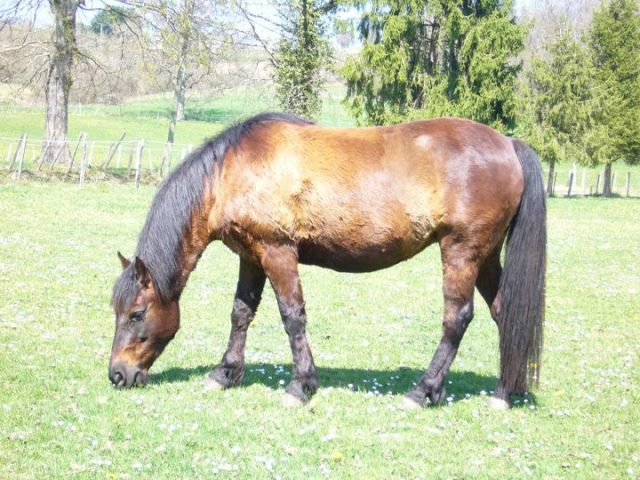Type the name of the breed you're looking for below
[wpdreams_ajaxsearchlite] Don't see the breed your're looking for? Click here and let us know!
Landais pony
| Country Of Origin | France |
| History and Background | The Landais or Barthais is a small pony from the Landes region of southwest France, and from the area of Pau in particular. They are used for riding and driving, and are noted for their trotting speed, with one member of the breed holding the speed record for the 100 kilometres (62 mi) route between Paris and Chartres. Developed by crossing native French horse with Arabian and possibly English blood, many members of the breed lived a feral existence in the forests and marshes of Landes until after World War II. Deaths from war-related causes and cross breeding caused the breed population to drop precipitously during this time. Post-World War II, another pony type from the region, the Barthais, was merged into the Landais due to low population numbers. Breed numbers remain low, with less than 100 new foals born each year. A 2008 genetic study concluded the Landais was one of five French equine breeds that should be conservation priorities in order to maintain maximum genetic variability in the French horse population. The Landais is an old breed, originally from the Landes region of southwestern France and probably influenced by Arabian or English blood. Some Arabian blood is thought to have been added around the time of the first Battle of Poitiers (732 AD) and probably again in the early 1900s. Many Landais lived in a feral state in the forests and marshes of Landes. In the early 19th century, plans were made to begin drying the swamps to further develop the forests for harvest. This pushed the ponies into clusters near ponds and coastal marshes, and they were sometimes hunted by people protecting the nearby sand dunes from the ponies' foraging. Until the mid-20th century, the feral herds of Landais continued to maintain their populations, with some members being caught for use or sale. During World War II, mines laid by the Germans to prevent shore landings killed many ponies, greatly reducing population numbers. Increasing numbers of automobiles in the area caused the removal of the remainder of the ponies, due to questions about their usefulness and increasing numbers of road accidents. Some Landais ponies now live in a semi-feral state with other livestock and wildlife on the banks of the Adour and Luy rivers in Landes. In the early 1900s, nearly 2,000 purebred Landais could be found. After World War II, they were crossed with heavier breeds to increase their build, but the crossbreeding resulted in the diminishing of purebred Landais stock. In 1988, Arab and Welsh Section B stallions were being used to rebuild the original breed. In 2008, a genetic study was performed on French horse breeds, which concluded that the Landais and four other breeds should be the focus of French conservation efforts. Placing conservation priority on these five breeds, according to the study, would allow for the preservation of the maximum amount of genetic diversity among the French horse population. The majority of the Landais population is located in Pau, as of 2010, with a smaller number in their birthplace of Landes. Some ponies are also located in Paris, Brittany, Aquitaine and the Midi-Pyrenees. Annual births are low, ranging from 34 to 78 between 2000 and 2011. The breed also includes the Barthais, a heavier, taller type of pony that was once considered to be a separate breed. Because only a small number of these ponies remained after World War II, the Barthais was merged into the Landais. Another type of pony, the Poney des Pins, which existed in Gironde, was categorized with the Barthais, but died out in the 1950s. |
| Use Today | Dressage, Eventing, Riding, Showjumping |
| Height | 11.1 to 13 hands (45 to 52 inches, 114 to 132 cm) |
| Colour | Bay, Black, Brown, Chestnut |
| Characteristics | The Landais has a small head with a broad forehead and a straight profile. They have long, muscular necks and sloping shoulders. The withers are pronounced, and they have a short, wide back and a short, sloping croup. |
| Other Considerations | The Landais is noted for being a good trotter; the 100 kilometres (62 mi) record set by the Landais Jongleur between Paris and Chartres was unbroken in 2010. The Landais is used for driving, jumping, eventing and dressage, and as a family pony. The Landais was used, along with Arabians, various English pony breeds and other French blood, to create the French Saddle Pony. |



